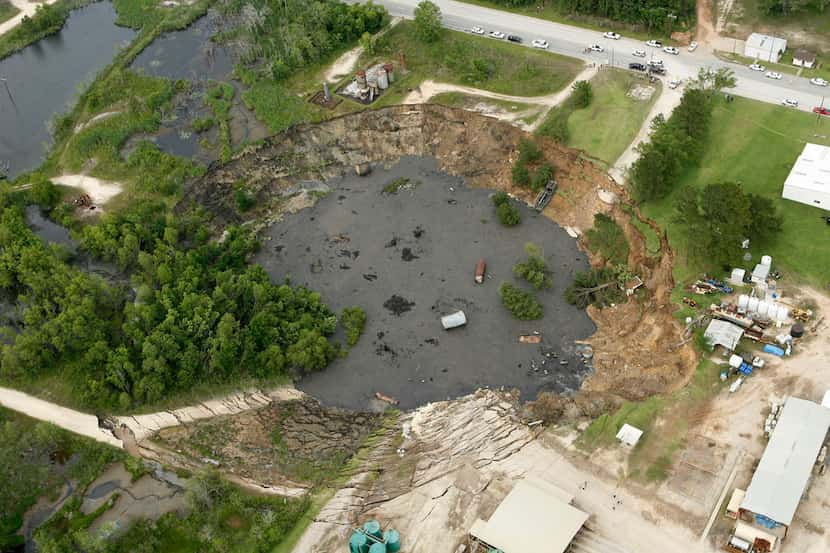
By Sarah Bahari
2:10 PM on Apr 4, 2023 CDT — Updated at 4:06 PM on Apr 5, 2023 CDT
An enormous sinkhole that once threatened to swallow a small Texas town is growing again after 15 years of stability.
The sinkhole in the small southeast Texas town of Daisetta first appeared in 2008, swallowing oil tanks, trees, telephone poles and several cars. It reached 900 feet wide and 260 feet deep before stabilizing, according to estimates at the time.
Authorities said this week the sinkhole is once again swelling, gaining roughly 150 feet in width and depth so far. Residents told local news outlets they were nervous and are prepared to flee, but no evacuations have been ordered yet.
“I was having a lot of trouble going to sleep last night because I didn’t know if we were going to get swallowed up,” Jordana Priessler, who lives near the sinkhole, told KTRK-TV. “My family told me it happened kind of fast before.”
Get the latest breaking news from North Texas and beyond.
On Wednesday, local and state officials were placing a perimeter along the edges of the crater to monitor any movement, a city spokesperson said. A geologist has examined the site and is working on a preliminary report.
Aerial views show visible cracks in the earth, and some tanks, buildings and other structures are leaning and sliding into the water, the station reported. Two metal tanks have fallen into the sinkhole but were empty.
City officials urged people to avoid the area if possible.
“Sinkholes are extremely unpredictable,” Liberty County Assistant Fire Marshal Erskin Holcomb told KTRK. “It can take a week to move one foot, or it can crumble 20 feet overnight.”
Daisetta, which is home to fewer than 1,000 residents, is built entirely on a salt dome some 55 miles northeast of Houston. Salt is particularly prone to dissolving, creating large, bowl-shaped sinkholes, according to the U.S. Geological Survey.
“Sinkholes rarely happen, but when they strike, tragedy can occur,” the agency says on its website. “Sinkholes happen when the ground below the land surface cannot support the land surface.”
Linda Hoover, who lives next to the sinkhole, told the station she had believed the hole would remain dormant.
“We just never thought it would start again,” she said.
“My worst fear is for it to overtake us at night. So that’s the reason we haven’t really been able to sleep,” Hoover told the station. “We have packed our bags just in case and parked our cars kind of funny. So we can get out of here in a hurry if we need to.”

Sarah Bahari, Staff writer. Sarah Bahari is a trending news reporter. She previously worked as a writer for the Fort Worth Star-Telegram, where she covered a bit of everything.
sarah.bahari@dallasnews.com sarahbfw/cloudfront-us-east-1.images.arcpublishing.com/dmn/IYF5ZMECLVH5FLZOKHWIYTZKJ4.jpg)
/cloudfront-us-east-1.images.arcpublishing.com/dmn/BQAVQSQNO5DJBMPFRA57ZEFTOQ.jpg)
/cloudfront-us-east-1.images.arcpublishing.com/dmn/NUOPSTEIAVG5VEATDNS5M555DM.JPG)
/cloudfront-us-east-1.images.arcpublishing.com/dmn/SF26TWVNT5A5PKFIIEPXGAUV7A.JPG)
Dallas officials celebrate as $1.25 billion in bond requests get overwhelming approval
/cloudfront-us-east-1.images.arcpublishing.com/dmn/ZR2UIPF5UZEJ3PEIUV5ZE3WFXQ.jpg)